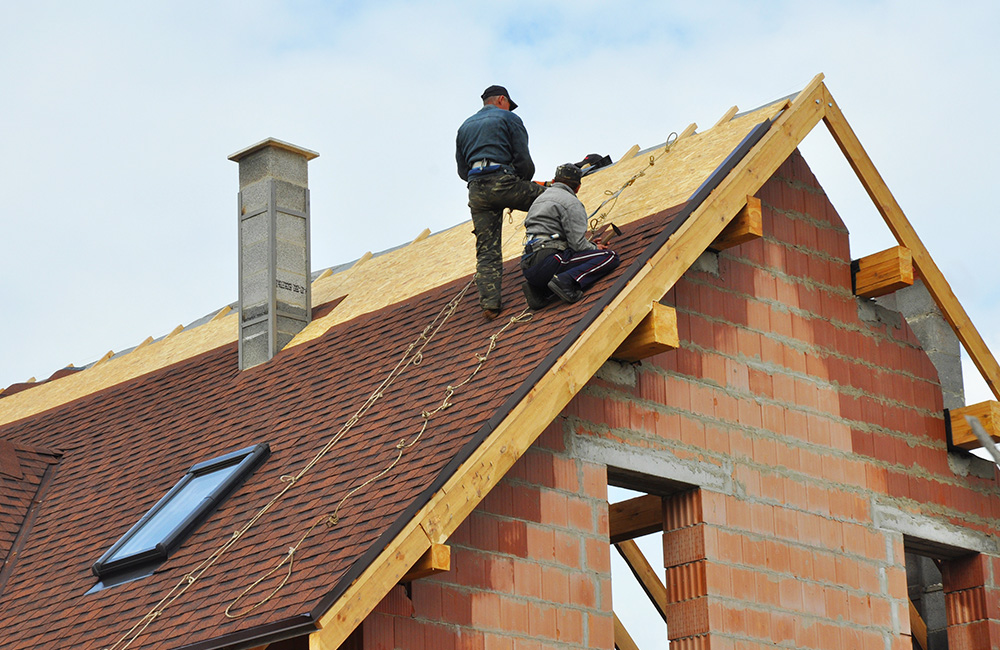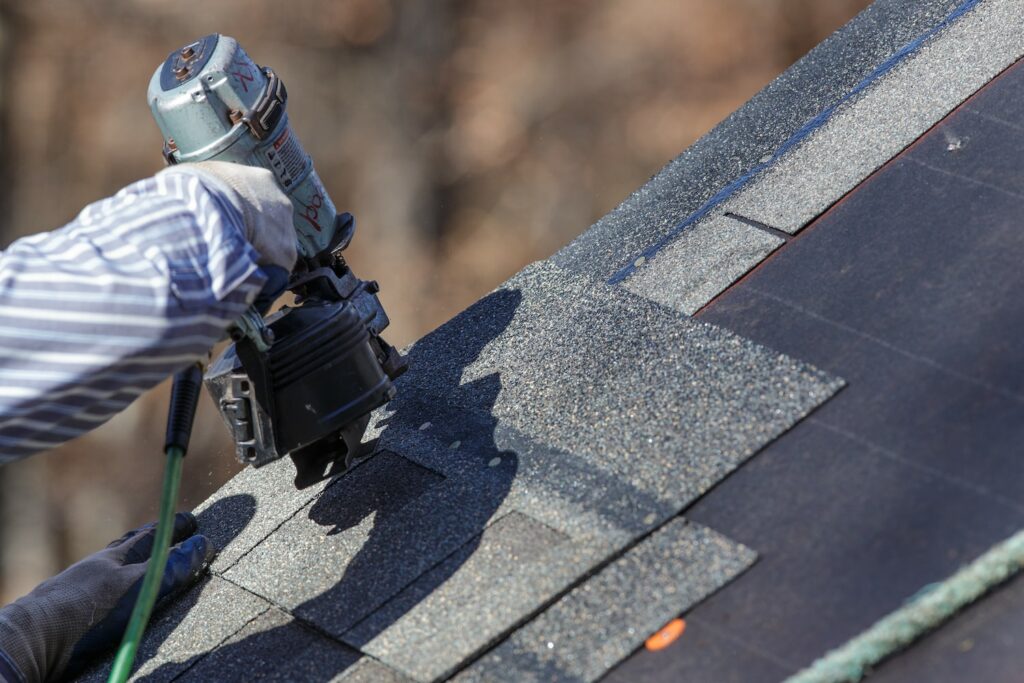Preventative Roofing System Maintenance: Tips to Stay Clear Of Expensive Fixings
To prevent pricey repairs, you should evaluate your roof regularly for missing out on or damaged roof shingles, clean your downspouts and gutters to prevent clogs, and trim looming branches. These simple steps can substantially prolong your roofing system's lifespan, and there's lots much more you can do to protect your investment.
Inspect Your Roof Covering Frequently
When you check your roofing on a regular basis, you can catch prospective problems before they become expensive repair work. Beginning by looking for missing, broken, or crinkling shingles; these are signs that your roofing may need focus. Look for any type of noticeable wear around smokeshafts, vents, and flashing, as these areas are often vulnerable to leakages. Take notice of any drooping or uneven sections, which can indicate architectural concerns.
After a tornado, it's vital to assess your roof covering for damage triggered by high winds or heavy debris. Do not fail to remember to inspect the bottom of your roofing system in the attic room; seek signs of dampness or mold and mildew, which can indicate leaks. You must additionally watch out for granules in your gutters, as they can signal shingle damage. By taking these steps, you'll extend your roof's lifespan and conserve on your own from unforeseen expenditures. Routine inspections are vital to maintaining a healthy and balanced roof.
Clean Gutters and Downspouts
Normal roof evaluations normally lead to an essential job: cleaning your downspouts and rain gutters. Clogged gutters can trigger water to back up, leading to possible roofing system leaks and architectural damage. To stop these concerns, make it a habit to check your seamless gutters a minimum of two times a year, specifically after heavy tornados or fall when leaves collect.
Don't forget to examine downspouts for obstructions. If water isn't streaming easily, you could need to use a plumbing technician's snake or a hose pipe to clear the obstruction.
Address Overhanging Branches
Looming branches can pose a significant risk to your roof covering, so it is very important to trim them routinely. Not only can they trigger damage during storms, yet they can additionally invite bugs. Make it a habit to evaluate for any type of indicators of wear or damages to maintain your roof in top form.
Trim Routinely
One of the most vital action in roofing system maintenance is to cut those branches that hang as well near your home. Looming branches can cause significant concerns, from particles buildup to prospective damage throughout tornados. Consistently cutting down these branches maintains your roof clear and reduces the danger of leaks and parasites. Make sure to examine the health of the trees around your home; dead or weak branches posture an even higher threat. Objective to trim branches a minimum of 6 feet away from your roofline, ensuring they will not come right into contact with your tiles. You don't require to tackle this job alone; employing a specialist arborist can assure reliable and safe cutting, safeguarding your roof and enhancing your home's overall look.
Check for Damages
 roof repair
roof repair
Check for Harmed or Missing Out On Shingles
It's necessary to examine your tiles routinely for any type of damages or missing out on items. Replace missing out on tiles immediately to stop further problems if you identify any concerns. Also, watch on how the weather condition impacts your roofing system, as severe problems can bring about use and tear.
Inspect Routinely for Damages
Regularly inspecting your roofing system for damage is necessary to preserving its integrity and lengthening its life-span. Inspect your roofing system after solid winds or hefty tornados, as these problems can displace or harm tiles. By making roofing system inspections a normal component of your upkeep routine, you can capture troubles early and save on your own from pricey repair work down the line.
Change Missing Out On Roofing Shingles Promptly
After examining for any kind of damage throughout your assessments, you may locate that some roof shingles are missing or jeopardized. Do not wait to replace them; timely action can prevent more issues. Missing out on tiles reveal your roof to moisture, which can result in leakages and even more extensive damages gradually.
Make sure to utilize tiles that match your roofing system's shade and style for a seamless look. Maintaining your roofing in top form is essential for securing your home and avoiding costly repairs down the line.
Screen Weather Condition Influence Regularly
As tornados roll through your location, keeping a close eye on your roof becomes necessary. After each tornado, take a minute to examine your roofing system for any damaged or missing tiles. Climbing up onto the roof covering isn't always essential; you can often spot troubles from the ground with field glasses.
 roof repair
roof repairEnsure Correct Ventilation
While numerous property owners concentrate on the exterior and structural elements of their roofings, guaranteeing appropriate air flow is crucial for maintaining its longevity and performance. Poor air flow can result in heat accumulation and wetness buildup, which can create damage gradually. Ensure your attic has sufficient airflow by setting up soffit vents and ridge vents. This setup permits a continual flow of fresh air, helping to manage temperature level and decrease moisture levels.
Correct ventilation not only improves your roof covering's life expectancy yet likewise enhances power efficiency, maintaining your home comfy year-round. By taking these actions, you're spending in your roofing's wellness and avoiding expensive repair work down the line.
Search for Indications of Leakages
Appropriate air flow assists avoid dampness accumulation, yet also with excellent air movement, it's important to keep an eye out for indications of leakages. Begin by checking your ceilings and walls for water spots or discoloration, which can suggest a leakage above.
Outdoors, examine your roofing for missing shingles, splits, or harmed flashing, as these vulnerabilities can bring about leaks. Take note of locations around skylights, vents, and smokeshafts, where leakages generally happen. If you observe any kind of signs, act rapidly to resolve them before they worsen. Remember, catching leakages early can save you from expensive repair services down the road. Routinely looking for these signs will certainly aid preserve your roofing's honesty and maintain your home completely dry and risk-free.
Set Up Expert Examinations
 roof repair
roof repair
Go for at the very least one assessment per year, ideally in the spring or fall, to line up with seasonal changes. Throughout these inspections, experts can determine potential risks like missing out on shingles, compromised blinking, or signs of mold and mildew. They'll likewise look for debris build-up that might lead to water pooling.
Do not await visible signs of trouble; taking aggressive actions can extend your roof's life-span. Spending in regular examinations not only protects your home however also provides you assurance understanding your roof covering is in great problem.
Frequently Asked Inquiries
Just how Usually Should I Execute Roof Inspections?
You need to carry out roof evaluations at the very least twice a year, ideally in spring and fall. Regular checks aid you identify potential concerns early, conserving you money and time on expensive repair work down the line.
What Tools Do I Need for Roofing Maintenance?
For roof upkeep, you'll require a tough ladder, safety harness, roof covering nails, a hammer, an utility knife, caulk, a trowel, and a flashlight. Don't neglect gloves and safety goggles to maintain yourself secured!
Can I Tidy My Roof Myself?
Yes, you can clean your roofing system yourself. Just ensure you have the right tools, put on security equipment, and comply with appropriate methods. It is necessary to be mindful to prevent accidents and assure reliable cleaning.
Just How Can I Identify Roofing System Leakages Early?
To determine roof covering leakages early, you'll intend to examine your roofing consistently. Seek water discolorations, mold, or missing out on tiles. Listen after hefty rain, and don't wait to inspect the attic for damp places.
What Are the Indicators I Required a New Roofing?
You'll need a brand-new roofing system if you notice crinkled or missing roof shingles, consistent leakages, or water spots visit this page on ceilings. Additionally, if your roof covering's age goes beyond twenty years, it's smart to contemplate substitute quicker instead of later.
To prevent costly repairs, you ought to inspect your roofing consistently for missing out on or harmed shingles, clean your gutters and downspouts to avoid clogs, and trim looming branches. Missing out on shingles reveal your roofing system to moisture, which can lead to leakages and more comprehensive damage over time.
After each storm, take a minute to inspect your roof covering for any kind of harmed or missing out on tiles.Outdoors, analyze your roof covering for missing tiles, cracks, or harmed blinking, as these vulnerabilities can lead to leaks.To determine roofing system leaks early, you'll desire to inspect your roof covering frequently.